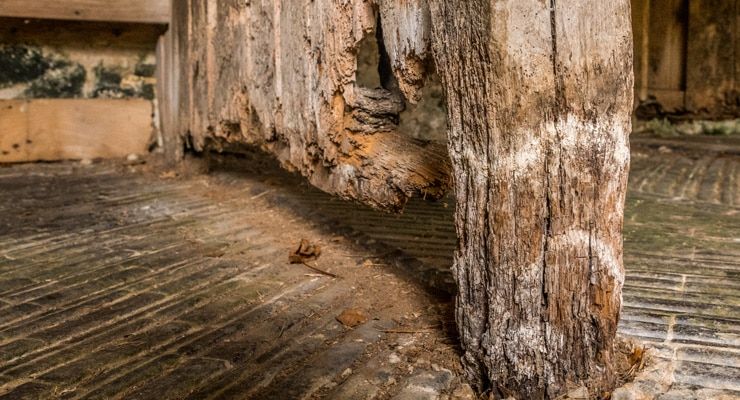What is dry and wet rot?
Dry rot and wet rot are two types of wood-destroying fungi that can cause significant damage to a home if left untreated. While both types of rot are serious problems, there are some key differences between the two that are important for homeowners to understand.
What are the differences between the two types?
One of the main differences between dry rot and wet rot is the type of environment in which they thrive. As their names suggest, dry rot thrives in dry, warm conditions, while wet rot thrives in damp, wet conditions. This means that dry rot is more likely to occur in areas of the home that are exposed to heat or sunlight, while wet rot is more likely to occur in areas that are poorly ventilated or prone to leaks.
Another key difference between the two types of rot is the type of fungus that causes them. Dry rot is caused by the fungus Serpula lacrymans, while wet rot is caused by a variety of different fungi, including Coniophora puteana and Stereum hirsutum. These different fungi have different characteristics and can cause different types of damage to wood.
Which type causes the most damage?
In terms of the damage that they can cause, both dry rot and wet rot can be equally destructive. Both types of rot can cause wood to become weak and brittle, leading to structural damage and even the collapse of wood beams and other important structural elements. In addition, both types of rot can cause walls and ceilings to become discolored and may even lead to the growth of harmful mold.
How do you treat dry and wet rot?
Treatment for dry rot and wet rot is generally similar, and typically involves removing the affected wood and replacing it with new, treated wood. This will help prevent the fungus from spreading and will ensure that your home remains structurally sound. It is important to seek the help of a qualified tradesperson, such as a carpenter or building inspector, to identify the extent of the problem and recommend the best course of action.
What happens if I ignore the rot?
If left untreated, both dry rot and wet rot can lead to a significant loss of home value. In severe cases, the damage caused by these fungi can be so extensive that it makes a home unsafe to live in, which can significantly reduce its value. In addition, even minor instances of rot can be a major turn-off for potential buyers, who may be hesitant to purchase a home with known structural problems.
In conclusion, dry rot and wet rot are two serious problems that can cause significant damage to a home if left untreated. Understanding the differences between the two types of rot, and taking steps to prevent and treat them, is essential for homeowners who want to protect the value and safety of their homes.
If you would like to speak to an expert about the steps that you can take to treat wet and dry rot, install the free Planna app using the links below to and book a 15 minute video consultation from as little as £5.
Don't want to speak with a pro? you can follow the FREE step by step instructions in the app.



